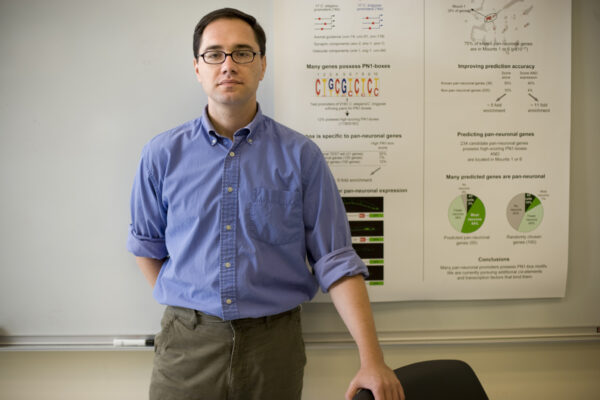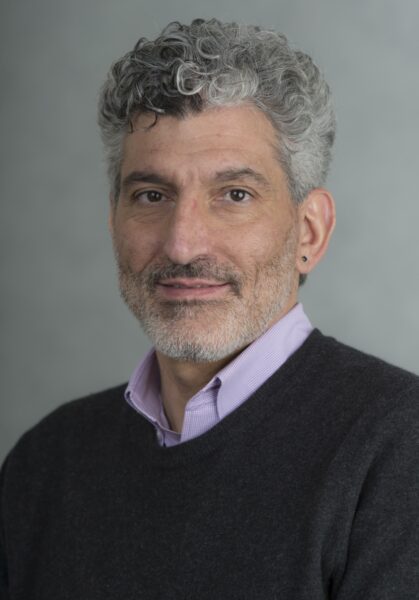
The brain is made up of neurons. Despite remarkable variation in the structure and function, all neurons possess a shared set of attributes that are not seen in cells elsewhere in the body. Do these shared attributes make neurons more susceptible to disease causing agents and prevent regeneration following injury to the brain? Not surprisingly, all neurons also express certain genes, called pan-neuronal genes that are not activated by cells elsewhere in the body. Some of the pan-neuronal genes are known, but others need to be identified. The expression of pan-neuronal genes is in turn regulated by factors that recognize specific promoter sequences, shared by these genes. Pan-neuronal genes, conserved DNA sequences in their promoters and factors that bind to these conserved sequences are hidden in the genomes of all organisms that have neurons.
Dr. Ilya Ruvinsky, Assistant Professor of Ecology and Evolution at The University of Chicago, used a cutting-edge genomics approach to generate a complete list of pan-neuronal genes and to understand their regulation at the transcriptional level. His research worked to identify parts of the genome that regulate the expression of pan-neuronal genes. He chose to embark upon this task by using a simple, well-established model organism, a small roundworm, C. elegans. The worm is about 1 mm in length, its nervous system is comprised of 302 neurons whose pattern of connectivity has been completely mapped. The genome of this worm consists of approximately 20,000 genes, and has been sequenced. Many of the genes associated with human disease are included among these. What made this worm an attractive experimental model for Dr. Ruvinsky’s research is the availability of detailed genome sequence data and their ability to knock out gene expression using RNA interference (RNAi). By silencing the function of a gene, Dr. Ruvinsky’s research team was to determine whether or not that gene regulates the expression of pan-neuronal genes. Gene by gene, they planned to test whether neurons are able to maintain the expression of a pan-neuronal gene. In parallel studies Dr. Ruvinsky was to use computational genomics methods to search the whole genome for DNA sequences that are responsible for ensuring that pan-neuronal genes are expressed in neurons.
These studies highlight an important fact. The more we learn about neurological disorders, the more we become aware of the remarkable complexity of the brain and its constituent neurons. One might wonder why the nervous system is susceptible to mutations in some genes when the rest of the body is not. Although every cell has a full complement of the whole genome, only those genes that the cell chooses to express give it a set of properties. Neurons, for reasons that we do not yet understand, express certain genes that are excluded from the rest of the body. Supporting research into the basic functioning of genes and neurons will lead to a better understanding of organization and function of the nervous system, and thus to potential diagnosis and treatment of human disorders.






